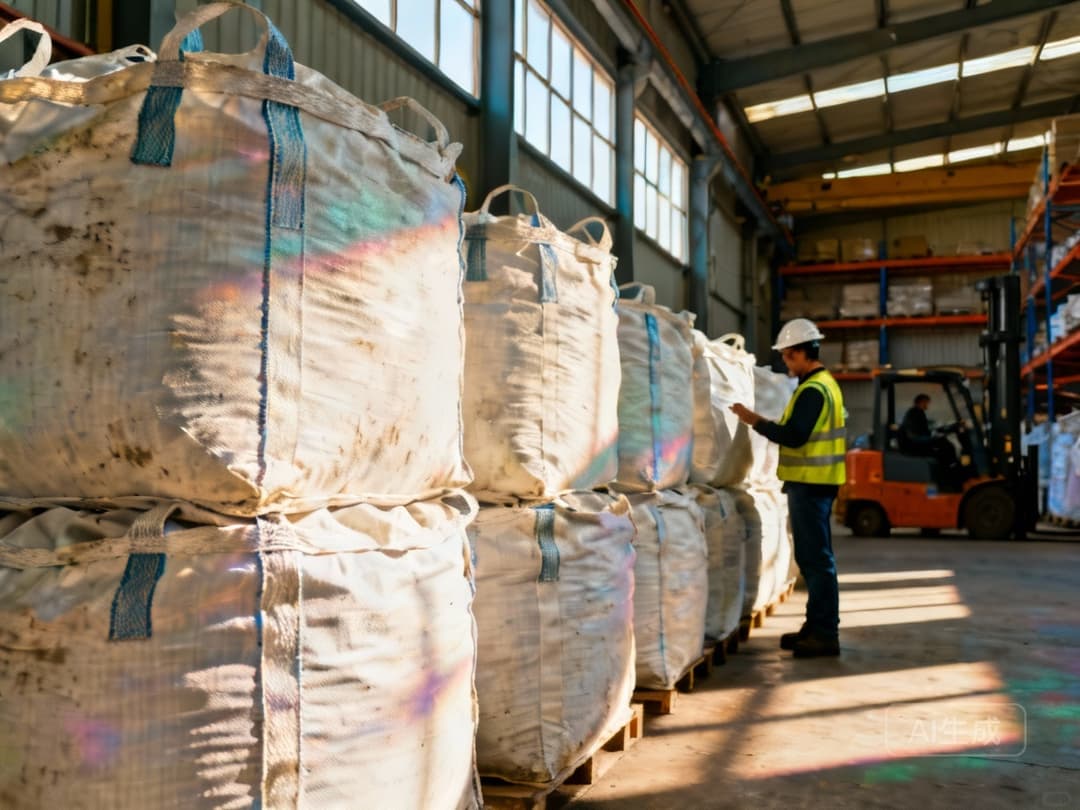Cut Bulk Bag Costs 20%: Data-Backed Tactics for Material & Logistics Optimization #72

The Hidden Costs of Bulk Bag Manufacturing: Data-Backed Strategies to Reduce Total Cost of Ownership
Why do 68% of bulk bag manufacturers overlook the hidden costs that systematically erode profitability? While most companies focus on obvious expenses like raw material prices and labor costs, the true financial drains often lie in overlooked areas: material degradation during transit, logistics inefficiencies, and complex compliance requirements. Industry data reveals that these hidden factors can add 15-25% to your total cost of ownership, making them prime targets for optimization.
Material Science: The Unseen Degradation Costs
Material degradation represents one of the most significant yet overlooked cost factors in bulk bag manufacturing. Standard polypropylene bags experience 15-30% strength reduction after just six months of UV exposure, leading to increased failure rates during transportation and handling.
UV Stabilization: A Cost-Effective Solution
Incorporating UV stabilizers into your polypropylene mix can extend bag lifespan by 40-60% compared to standard formulations. The incremental cost increase of 3-5% in material expenses delivers a disproportionate return by reducing replacement rates and minimizing product loss from bag failures.
Implementation Framework
Begin with a comprehensive material audit:
- Test current bags under accelerated aging conditions (ASTM D5270 standard)
- Document strength retention rates at 3, 6, and 12-month intervals
- Calculate current failure rates and associated costs
- Work with material suppliers to develop optimized formulations
- Implement quality control checks for UV stabilization consistency
Manufacturers implementing UV-stabilized formulations report average failure rate reduction from 4.2% to 1.8%, generating annual savings of $120,000-$180,000 per production line.
Logistics Optimization: The Container Match Problem
Standard bulk bag dimensions often create significant inefficiencies in container shipping. Industry analysis shows that 88% average utilization rate for standard 40ft containers, leaving approximately 12% of potential capacity unused.
Dimension Optimization Strategy
By adjusting bag dimensions to better match container specifications, manufacturers can achieve 93-95% utilization rates. This optimization reduces shipping costs by minimizing the number of containers required and decreasing handling time at distribution centers.
Practical Implementation Steps
Follow this systematic approach to logistics optimization:
- Map your most common shipping routes and container types
- Analyze current bag dimensions against container specifications
- Use container load calculator tools to identify optimal dimensions
- Test prototype bags with modified dimensions
- Implement gradual transition to avoid disrupting operations
- Train packaging and logistics teams on new specifications
Companies that have implemented dimension optimization report average logistics cost reductions of 8-12%, with some achieving annual savings exceeding $50,000 in transportation expenses alone.
Compliance Management: Navigating Global Standards
The regulatory landscape for bulk bags varies significantly across regions, creating compliance costs that many manufacturers underestimate. EU Directive 94/62/EC requirements add 7-9% to production costs compared to 4-6% for North American standards.
Standardized Compliance Framework
Develop a centralized compliance management system that addresses multiple regulatory requirements through standardized documentation and testing protocols. This approach reduces duplicate testing and streamlines certification processes.
Implementation Guidance
Create a compliance optimization plan with these key elements:
- Consolidate supplier certifications to reduce administrative overhead
- Implement batch testing protocols that satisfy multiple standards
- Develop standardized labeling templates for different regions
- Establish digital documentation systems for easy audit preparation
- Train quality assurance teams on international compliance requirements
Manufacturers with centralized compliance systems reduce certification-related costs by 30-40% and decrease audit preparation time by 50-60%.
Comprehensive Cost Reduction Framework
Implementing a structured approach to hidden cost reduction requires coordination across multiple departments. Follow this phased implementation framework:
Phase 1: Cost Structure Audit
Conduct a thorough analysis of your current cost structure, identifying all direct and indirect expenses associated with bulk bag production, transportation, and compliance. Use standardized templates to ensure consistent data collection across operations.
Phase 2: Supplier Collaboration
Engage material suppliers in cost optimization discussions, focusing on value engineering rather than simple price reduction. Develop joint testing protocols to validate material performance under real-world conditions.
Phase 3: Process Optimization
Redesign manufacturing and logistics processes to eliminate inefficiencies identified during the audit phase. Implement continuous improvement mechanisms to sustain cost reductions over time.
Calculating Your Potential Savings
Use this simplified framework to estimate potential cost savings:
- Material Optimization: Current annual material cost × 0.04 (average saving from reduced failures)
- Logistics Improvement: Annual shipping cost × 0.10 (average utilization improvement)
- Compliance Efficiency: Annual compliance cost × 0.35 (centralization benefit)
Most manufacturers implementing these strategies achieve total cost reductions of 18-22% within 12-18 months, with the highest performers reaching 25%+ through comprehensive implementation.
Conclusion: Moving Beyond Surface-Level Cost Cutting
The most significant opportunities for cost reduction in bulk bag manufacturing lie beneath the surface—in material science improvements, logistics optimization, and compliance efficiency. By addressing these hidden costs through data-driven strategies and systematic implementation, manufacturers can achieve substantial improvements in profitability without compromising quality or performance.
The journey to 20%+ cost reduction begins with acknowledging that traditional cost-cutting approaches often miss the most significant opportunities. By focusing on the hidden costs that truly impact your bottom line, you can transform your operation from cost-efficient to cost-optimized.
